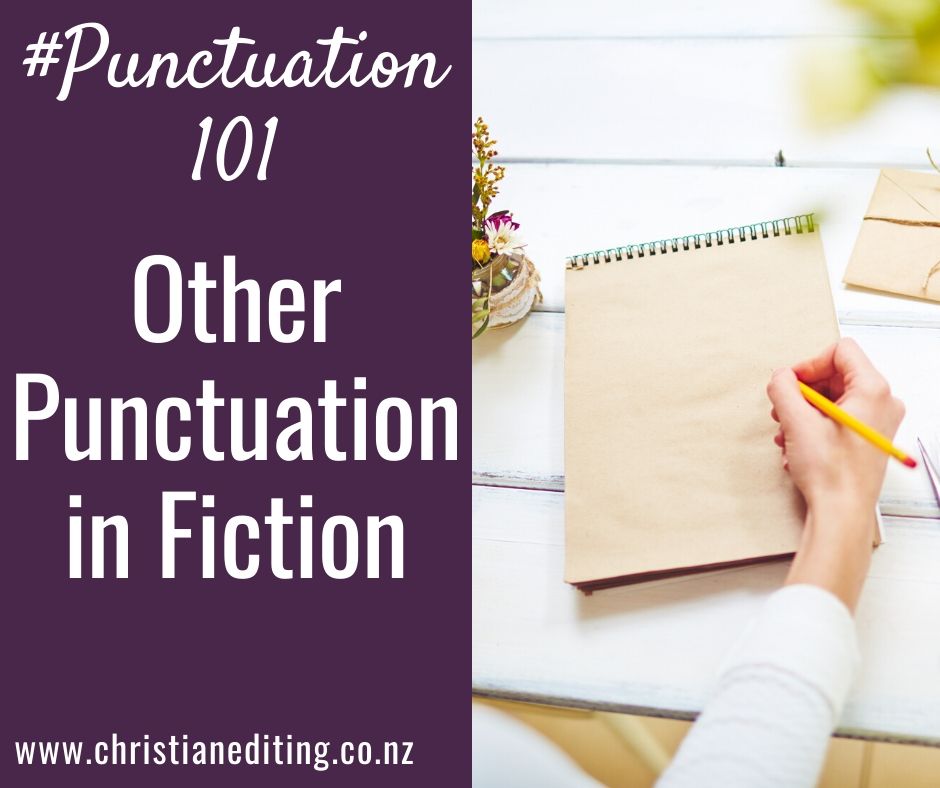One of the “rules” of writing I’ve come across is that we should not use colons or semicolons in fiction. I have to admit that I rarely see either punctuation mark in the fiction I read, but is it a real rule … or a guideline?
First, let’s look at how to correctly use colons and semicolons.
Note that the correct use of some punctuation marks will depend on which style guide you are following e.g. Associated Press, Australian Style Manual, Chicago Manual of Style, or the Christian Writers Manual of Style (which does not include an apostrophe in “writers”, no matter how much you or I might think they should).
How to use Semicolons
The main use of the semicolon is used to join two independent clauses in a way that is stronger than a comma but weaker than a full stop. The key is that each clause can stand alone as a separate and complete sentence; if either clause cannot stand alone (i.e. is a dependent clause), a comma should be used.
(Yes, my previous sentence is an example of correct semicolon usage.)
The other use of the semicolon is in run-on lists. As per Chicago 6.131:
- run-on lists are preceded by a colon;
- each item in the list starts with a lowercase letter;
- each item in the list concludes with a semicolon except the last;
- the last item concludes with a period.
Semicolons can also be used in complex lists in running text. For example:
The members of the team were from London, Canada; London, England; and Sydney, Australia.
Using a combination of commas and semicolons clarifies that the members of the team are from three locations. Using commas alone would likely confuse the reader. In this example, the other option would be to simplify the information so only commas were needed:
The members of the team were from Australia, Canada, and England.
(As you can see, I choose to use the Oxford aka serial comma.)
How to Use Colons
As you can see from the examples above, colons can be used to introduce a list or example. Colons can also be used to join two independent clauses when the second clause amplifies the first:
I couldn’t help myself: I baked a double batch of cookies and put the second in cupcake papers.
The other use of colons is when citing verses from the Bible e.g. John 3:16 (NIV).
Using Semicolons in Fiction
I can’t think of any novel I’ve read in the last year from a mainstream traditional publisher that used colons or semicolons. In fact, the only novel I can think of that used semicolons was self-published, and had a lot of small punctuation errors so isn’t a great advertisement for semicolon use.
I have seen blog posts saying it’s okay to use colons or semicolons, but they tend to use old authors (Austen and Dickens) or literary fiction as their examples. This leaves the impression that using colons and semicolons is similar to using quotation marks for direct thought: technically correct, but dated.
I suspect there are two main reasons editors and publishers don’t encourage colons or semicolons in modern fiction:
- Many authors don’t use them properly.
- There are alternatives that are easier to use correctly.
(Incidentally, that’s the other way to punctuate a list: start each item in the list with a capital letter, and end it with a period.)
Steven James suggests cutting semicolons to improve readability:
You never want to include anything that will cause a reader to pause or stumble.
The typical alternatives to colons and semicolons in modern fiction are:
- Use two sentences.
- Use an em dash.
However, using em dashes can introduce another problem: overuse. Em dashes—and other special punctuation marks such as ellipses—should be used sparingly. As editor Beth Hill says:
While I won’t tell a writer he can never use a certain punctuation mark, I will offer the advice to not overuse the semicolon or any punctuation. Anything that distracts from the story should go, and too much of any one element is a distraction.
Not using colons and semicolons solves two problems:
– You don’t have to remember how to use a semicolon or colon correctly.
– You don’t have to decide whether the sentence requires a colon or semicolon.
So using or not using colons or semicolons in fiction is more of a guideline than a rule. It’s author (or publisher) choice, like using the Oxford comma or deity pronouns.



